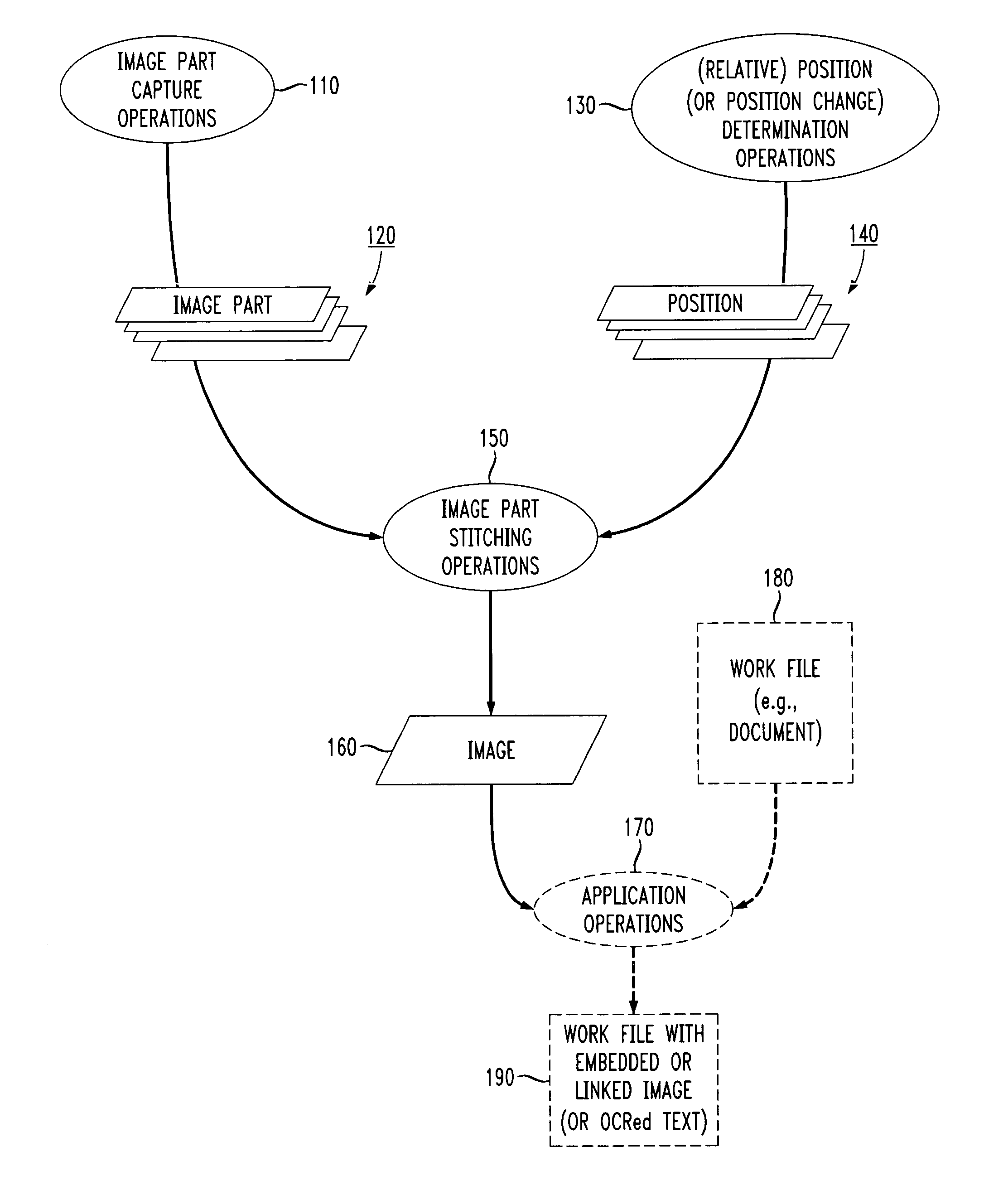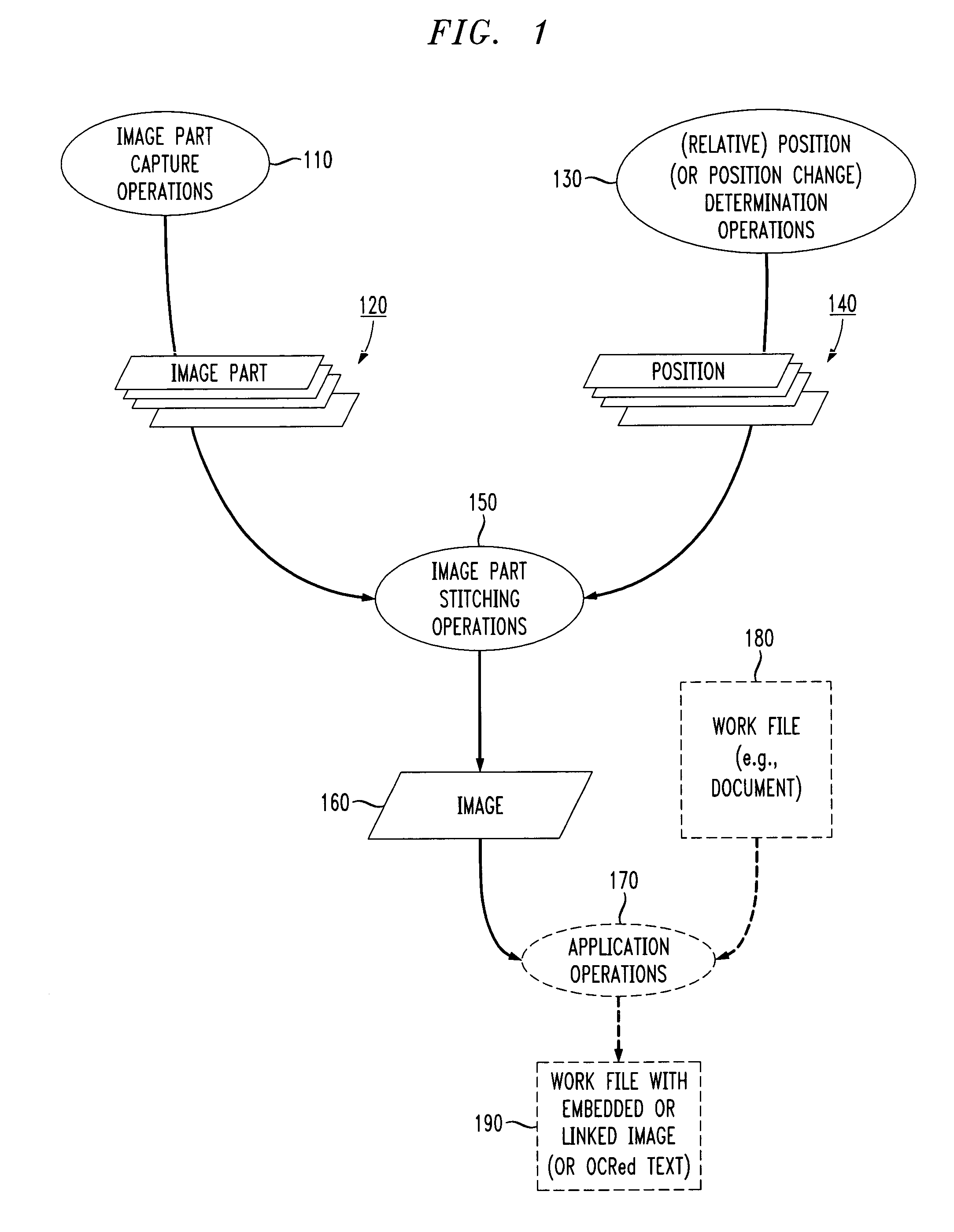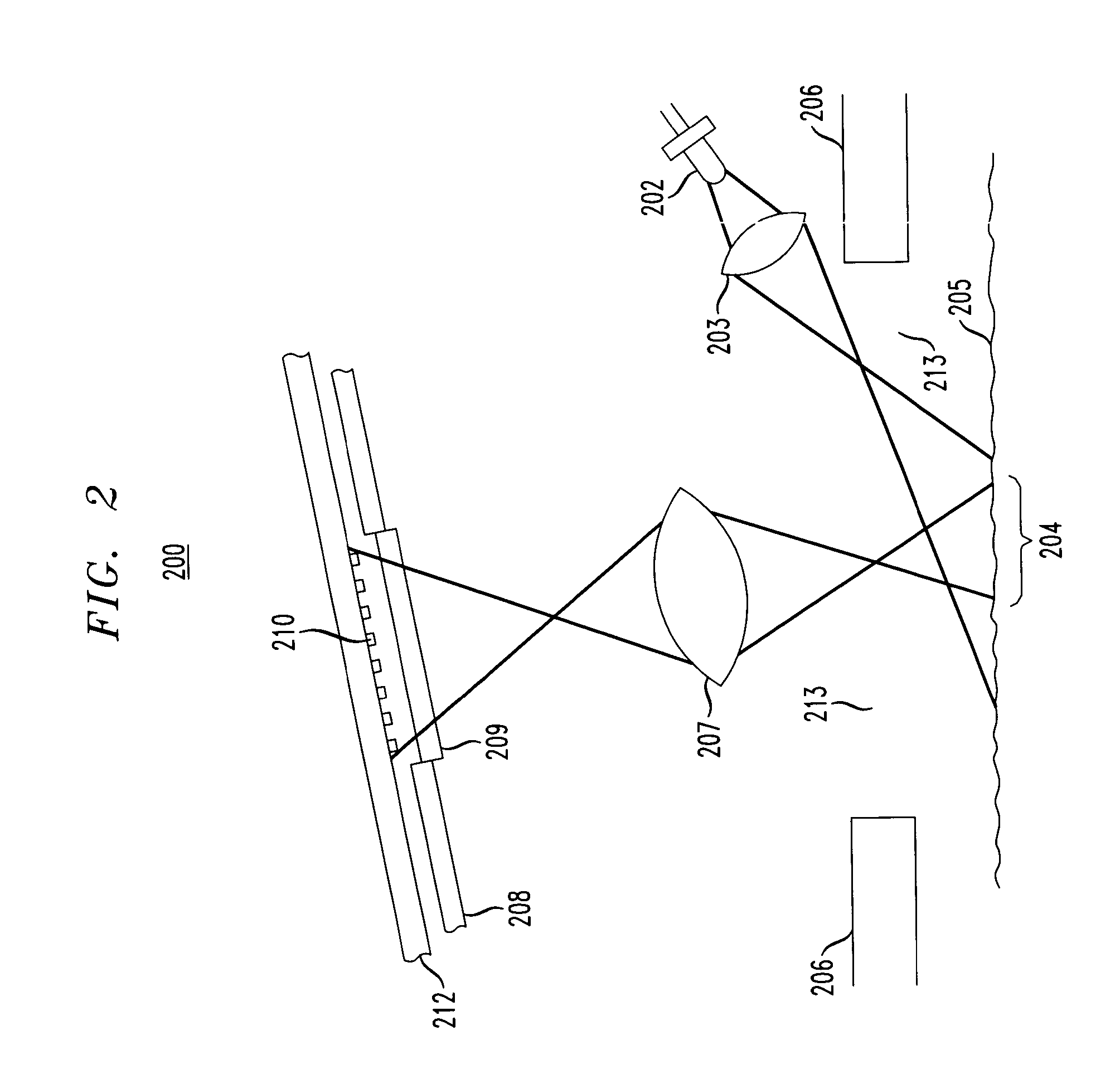Scanning optical mouse
a mouse and optical technology, applied in instruments, cathode-ray tube indicators, computing, etc., can solve the problems of not providing the same level of precision and leveraging of existing components, and leveraging might not provide the same level of precision and leveraging
- Summary
- Abstract
- Description
- Claims
- Application Information
AI Technical Summary
Benefits of technology
Problems solved by technology
Method used
Image
Examples
first embodiment
[0037]§ 4.1.2 First Embodiment
[0038]FIG. 2 is a diagram of a first exemplary embodiment 200 of the present invention. In the first embodiment 200, the image part capture operations 110 and position determination operation 130 share a light source and an image pickup device. A lens 203 projects light emitted from a light source (e.g., LED, IR LED, etc.) 202, through a window or opening 213 in a bottom surface 206 of a mouse and onto a region 204 that is part of a document (or some other surface having micro textures) 205 being scanned.
[0039] An image of illuminated region 204 is projected by lens 207 through an optical window 209 in package portion 208 of an integrated circuit and onto an imaging device (e.g., an array of photo detectors such as a CCD) 210. The window 209 and lens 207 may be combined. The imaging device 210 may comprise a 12-by-12 through 24-by-24 square array. Arrays having other shapes, sizes and resolutions are possible.
[0040] In this first embodiment 200, the l...
second embodiment
[0041]§ 4.1.3 Second Embodiment
[0042]FIG. 3 is a diagram of a second exemplary embodiment 300 of the present invention. The second exemplary embodiment 300 is similar to the first 200, but uses a separate light source 350 for illuminating a document (or some other surface being scanned) 305 for purposes of scanning. Light from the additional light source 350 may be projected onto the document (or some other surface) 305 being scanned at an angle of incidence greater than that of light source 302. A lens 360 may also be provided, but such a lens 360 is not strictly necessary. The light sources 302 and 350 may controlled to emit light in an alternating fashion—when light source 302 is emitting, captured images are used for position determination, while when light source 350 is emitting, captured images are used for image part capture (scanning).
third embodiment
[0043]§ 4.1.4 Third Embodiment
[0044]FIG. 4 is a diagram of a third exemplary embodiment 400 of the present invention. The third exemplary embodiment 400 is similar to the first 200, but uses a separate image pickup device 470 for purposes of image part capture (scanning) operations. Light reflected from the surface of the document (or other surface) 405 being scanned may be projected onto the separate image pickup device 470 using lens 480.
[0045] In one refinement of this embodiment 400, light emitted from the light source 402 may be made to hit the surface of the document (or some other surface) 405 at different angles of incidence—a smaller angle of incidence for purposes of position determination using imaging device 410, and a larger angle of incidence for purposes of image part capture (scan) using imaging device 470.
[0046] In an alternative or further refinement of this embodiment 400, the light source 402 may be made to emit different types (e.g., tuned or modulated wavelen...
PUM
 Login to View More
Login to View More Abstract
Description
Claims
Application Information
 Login to View More
Login to View More - R&D
- Intellectual Property
- Life Sciences
- Materials
- Tech Scout
- Unparalleled Data Quality
- Higher Quality Content
- 60% Fewer Hallucinations
Browse by: Latest US Patents, China's latest patents, Technical Efficacy Thesaurus, Application Domain, Technology Topic, Popular Technical Reports.
© 2025 PatSnap. All rights reserved.Legal|Privacy policy|Modern Slavery Act Transparency Statement|Sitemap|About US| Contact US: help@patsnap.com



